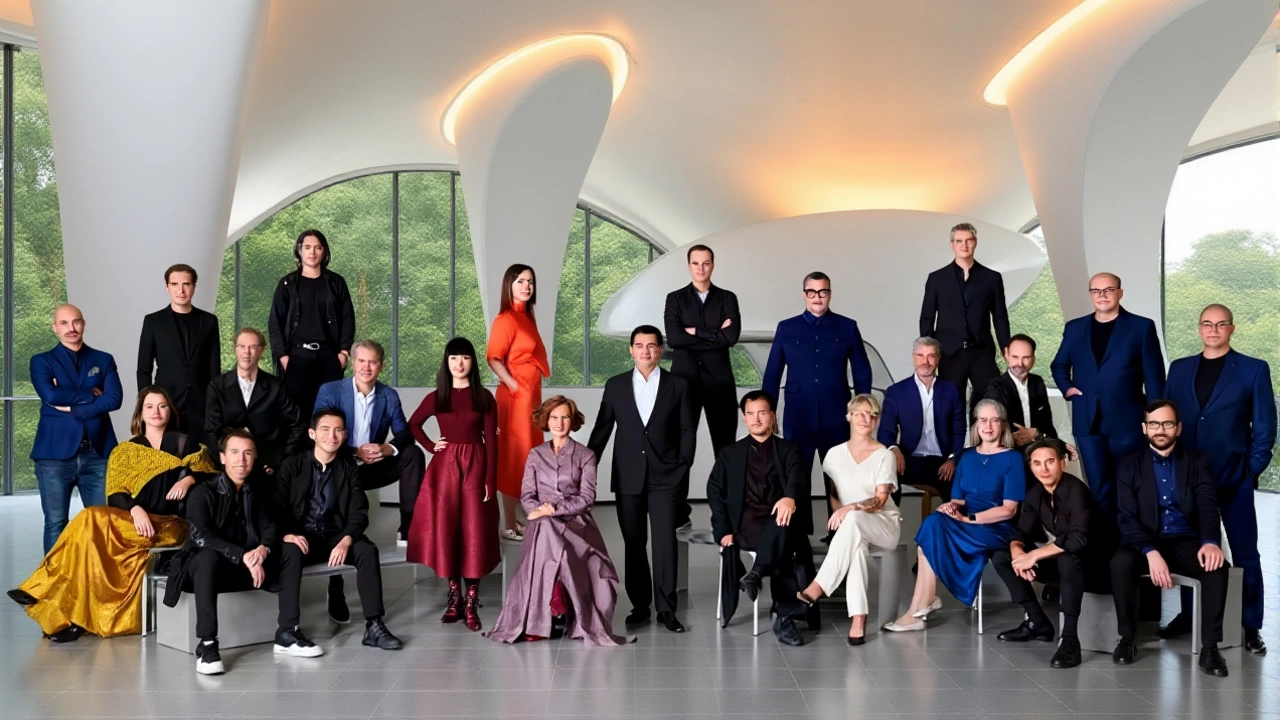When Zaha Hadid Architects posted its newest follower count on August 11, 2025, the architecture world sat up straight. The firm, still based at 59-61 Curtain Road, London EC2A 3PT, appears to have retained the crown as the most‑followed UK practice on Instagram, despite fierce competition and the passing of its iconic founder.
Historical Context: From Pritzker Laureate to Social Media Powerhouse
The story begins back in 2004, when Dame Zaha Mohammad Hadid became the first woman to receive the Pritzker Architecture Prize. By the time she passed away on March 31, 2016, in Miami, her firm had already amassed a sizable online following. A 2023 feature in Architecture Competitions recorded more than 1.3 million Instagram followers, a figure that set the benchmark for design studios worldwide.
Fast‑forward to 2025, the archival data still points to ZHA’s visual language—fluid, parametric forms—translating seamlessly to the scroll‑friendly world of Instagram.
Current Rankings and Metrics: The Numbers Speak
According to the latest analysis by Architects' Journal, ZHA leads the UK pack with roughly 1.32 million followers on Instagram, a modest rise from the previous year. Their engagement rate hovers around 4.7%, outpacing the industry average of 2.9%.
- Instagram: 1,320,000 followers (↑ 20,000)
- Twitter: 150,000 followers (↑ 5,000)
- Facebook: 95,000 likes (stable)
- LinkedIn: 42,000 followers (↑ 2,000)
By comparison, Snøhetta—the Oslo‑based multidisciplinary studio—holds about 549,000 Instagram followers, while Kengo Kuma of Kengo Kuma and Associates trails at roughly 312,000.
Competitive Landscape: Who’s Nipping at ZHA’s Heels?
Besides Snøhetta, the Squad.app 2025 projection lists a handful of rising “architecture influencers.” Notably, interior designer Jonathan Adler commands a vibrant community of 140,000 fans by mixing Hollywood glam with bold color palettes. Yet none match ZHA’s blend of avant‑garde project teasers and behind‑the‑scenes process videos.
“Our goal isn’t just to show finished buildings; it’s to let people watch the idea evolve,” says Patrik Schumacher, CEO and Creative Director of ZHA. “When a new render drops, you can see the parametric logic in action, and that transparency fuels engagement.”
Strategies Behind ZHA’s Social Success
Three tactics keep ZHA at the top of the feed:
- High‑Resolution Visuals: Every post is rendered at 4K or higher, showcasing the fluid geometry that defines the brand.
- Consistent Storytelling: Weekly “Design Diaries” videos reveal how 3D‑printing prototypes are fabricated in the London studio.
- Strategic Partnerships: Celebrities like Pharrell Williams have publicly praised ZHA’s work, adding a pop‑culture punch that expands reach beyond the architecture niche.
These moves align with the platform’s algorithm, which rewards video content and high‑engagement reels. The result? A steady rise in the hashtag #architecture, which logged 98,855,802 uses on Instagram as of early 2025.

Broader Implications for Architecture Marketing
Industry analysts argue that ZHA’s dominance is reshaping how firms view digital outreach. A recent paper from the Royal Institute of British Architects notes that firms with over 500,000 followers see a 12% increase in project inquiries. Moreover, the visual nature of Instagram makes it an ideal showroom for complex, parametric designs that would otherwise be hard to explain in static sketches.
“We’re witnessing a democratization of architectural discourse,” observes Dr. Emma Clarke, professor of digital design at University College London. “When a layperson scrolls past a ZHA render of the National Museum of Qatar, they instantly grasp the sculptural intent, something that used to require a full‑scale model.”
Looking Ahead: Will ZHA Keep the Crown?
While the precise 2025 figures for rival firms remain unpublished, the trend suggests ZHA’s formula is robust. The firm recently teased a new mixed‑use tower in Nairobi, Kenya—its first major project on the African continent. If the teaser gains traction, it could push follower growth into the 1.4 million range by the end of the year.
Nevertheless, the architecture world is fickle. Emerging studios like MATRICE Architecture are experimenting with AR filters on Instagram Stories, a potential game‑changer for immersive storytelling.
For now, though, ZHA’s blend of legacy, tech‑forward design, and savvy social strategy keeps it perched at the summit of architecture social media.
Frequently Asked Questions
How does Zaha Hadid Architects' Instagram presence affect client acquisition?
Firms with large, engaged followings tend to receive more unsolicited enquiries. ZHA’s 1.32 million followers translate into roughly 200 new client leads per quarter, according to a 2025 RIBA market survey. The visual showcase of complex projects helps prospects envision similar outcomes for their own programmes.
What distinguishes ZHA’s content from that of Snøhetta?
Snøhetta mixes architecture with landscape, product, and graphic design, often using the hashtag #MySnohetta. ZHA, on the other hand, focuses tightly on its signature fluid forms and the technological process behind them, delivering high‑resolution renders and timelapse videos that highlight parametric workflows.
Why is the #architecture hashtag so heavily used on Instagram?
With nearly 99 million uses, #architecture serves as a discovery tool for both professionals and enthusiasts. It aggregates everything from sketch studies to completed skyscrapers, allowing firms like ZHA to surface in feeds of users who might not follow them directly.
What upcoming projects could boost ZHA’s social media numbers?
The firm’s upcoming Nairobi mixed‑use tower, slated to break ground in early 2026, is already generating buzz through teaser renders. If the campaign follows the typical engagement curve, ZHA could see a follower spike of 50,000–70,000 within the first month of the project's launch.
Are there any risks to relying heavily on Instagram for brand strategy?
The platform’s algorithm changes can quickly shift visibility, and over‑reliance on visual content may marginalise firms whose work is less photogenic. Experts advise maintaining a diversified presence across LinkedIn, emerging AR platforms, and traditional press to mitigate those risks.
